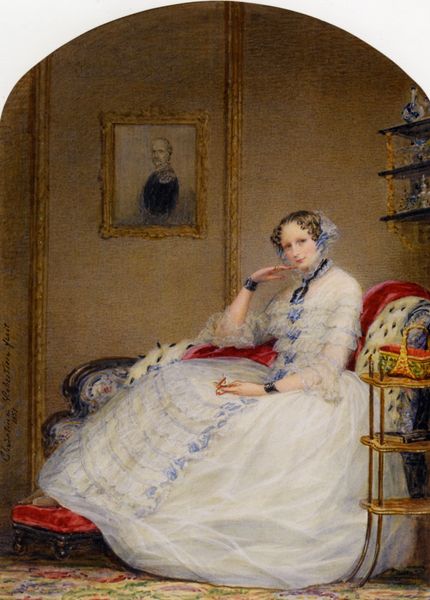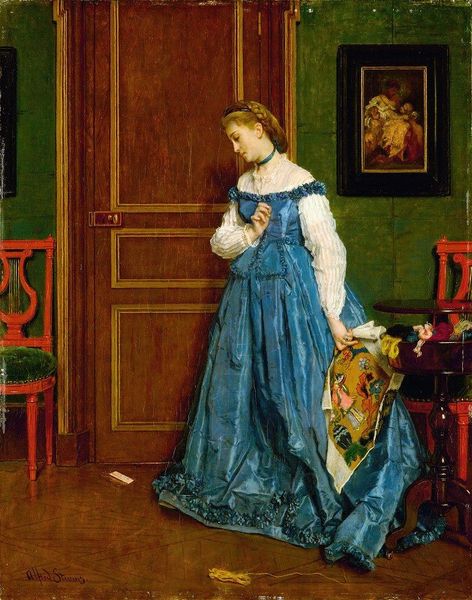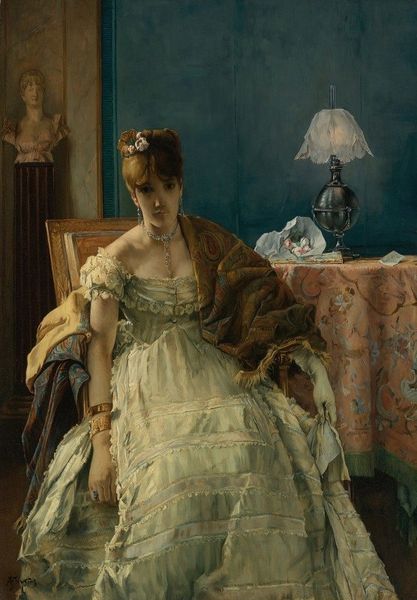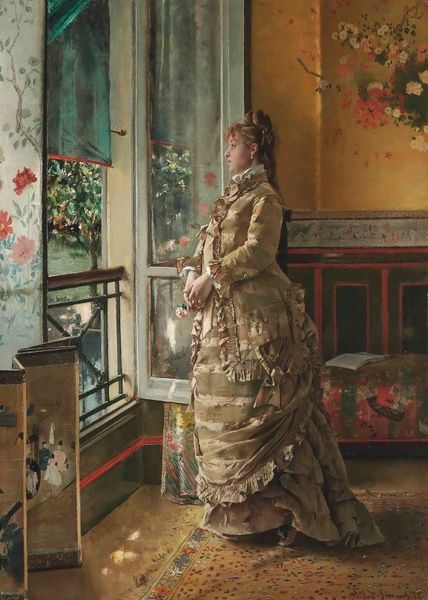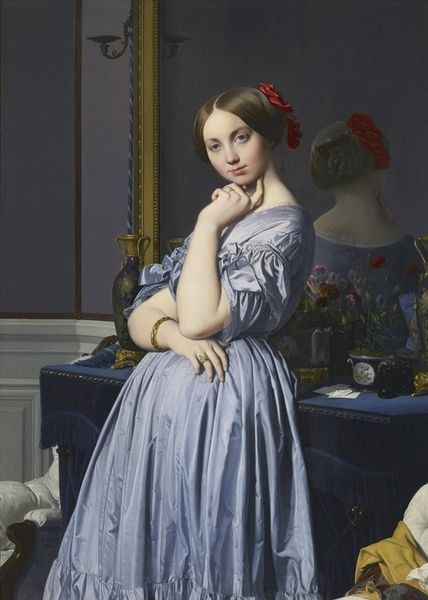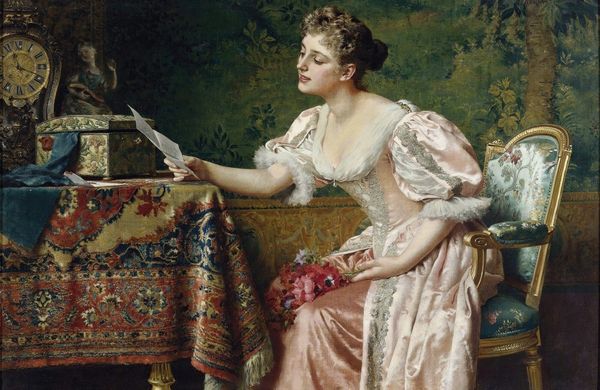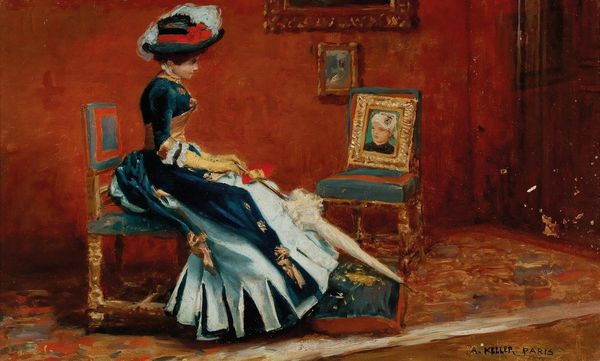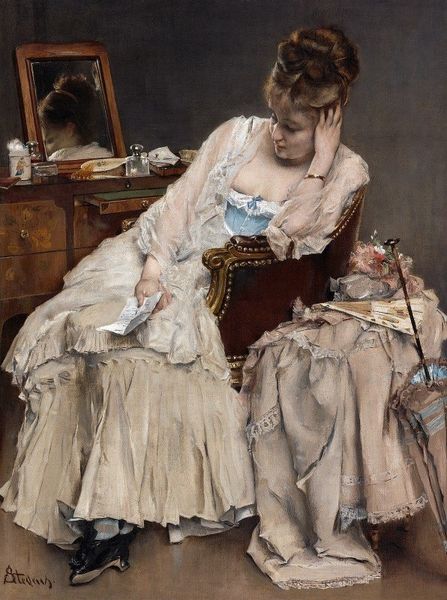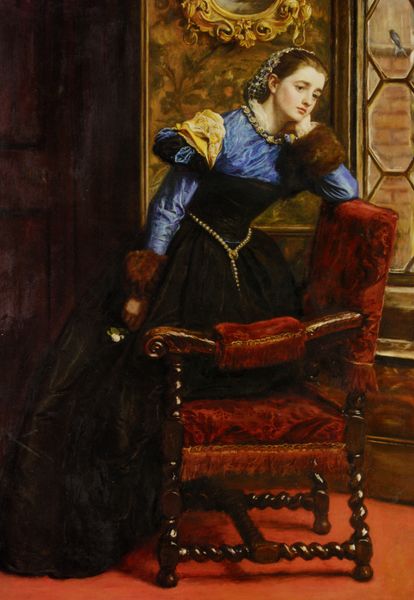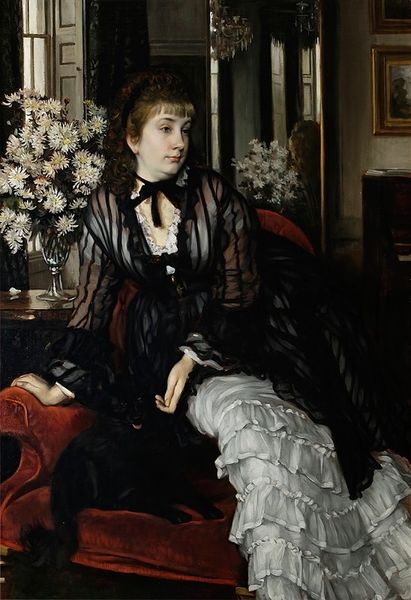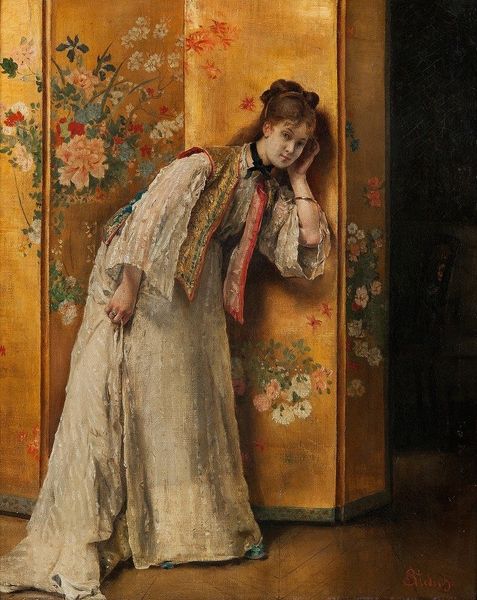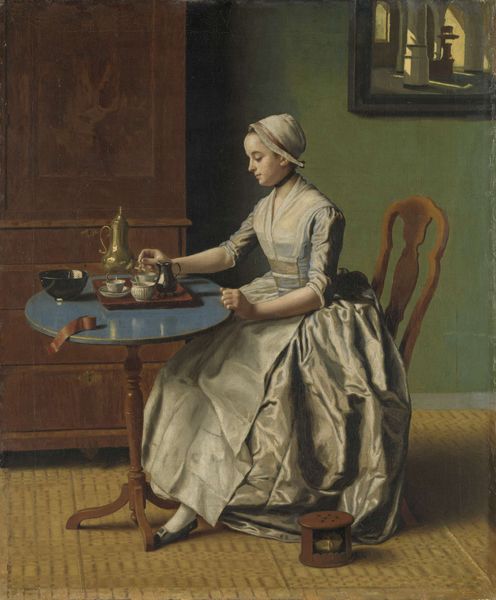
Copyright: Public Domain: Artvee
What’s on your mind? This oil painting by the Belgian artist Alfred Stevens (1823-1906) depicts a young woman, deep in thought. She clutches a letter in one hand, while her other hand gently touches her chin. She looks out into the distance, away from the viewer. An envelope lies discarded at her feet. What could this letter say? What is the woman thinking? Stevens has layered oil to mimic the texture of fabrics. Just look at the shiny velvet of the woman’s blue dress! A fur-trimmed cloak is still draped over her shoulder, suggesting she has just returned from outdoors. The colour palette of this work is especially striking. Could the colours have been chosen for their symbolism? Blue is typically associated with melancholy and sadness, yet the woman’s dress is a vivid and energetic shade. Gold can be seen throughout the painting – seen in her gloves, footstool, and the Japanese screen in the background. Gold traditionally symbolises wealth and richness, suggesting that the elegant woman belongs to the upper classes. There are several signs of modern taste in this painting. The painted screen behind the young woman evokes the nineteenth-century trend for ‘Japonisme’, when Japanese designs gained immense popularity in Western Europe. This woman is shown as the height of fashion!
Comments
No comments
Be the first to comment and join the conversation on the ultimate creative platform.
